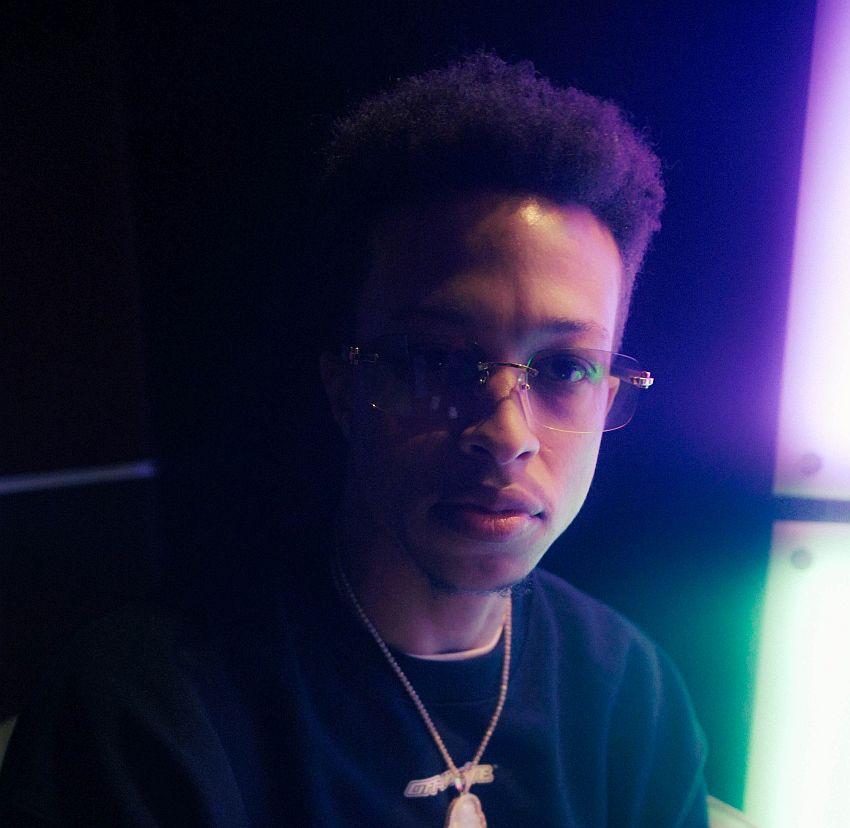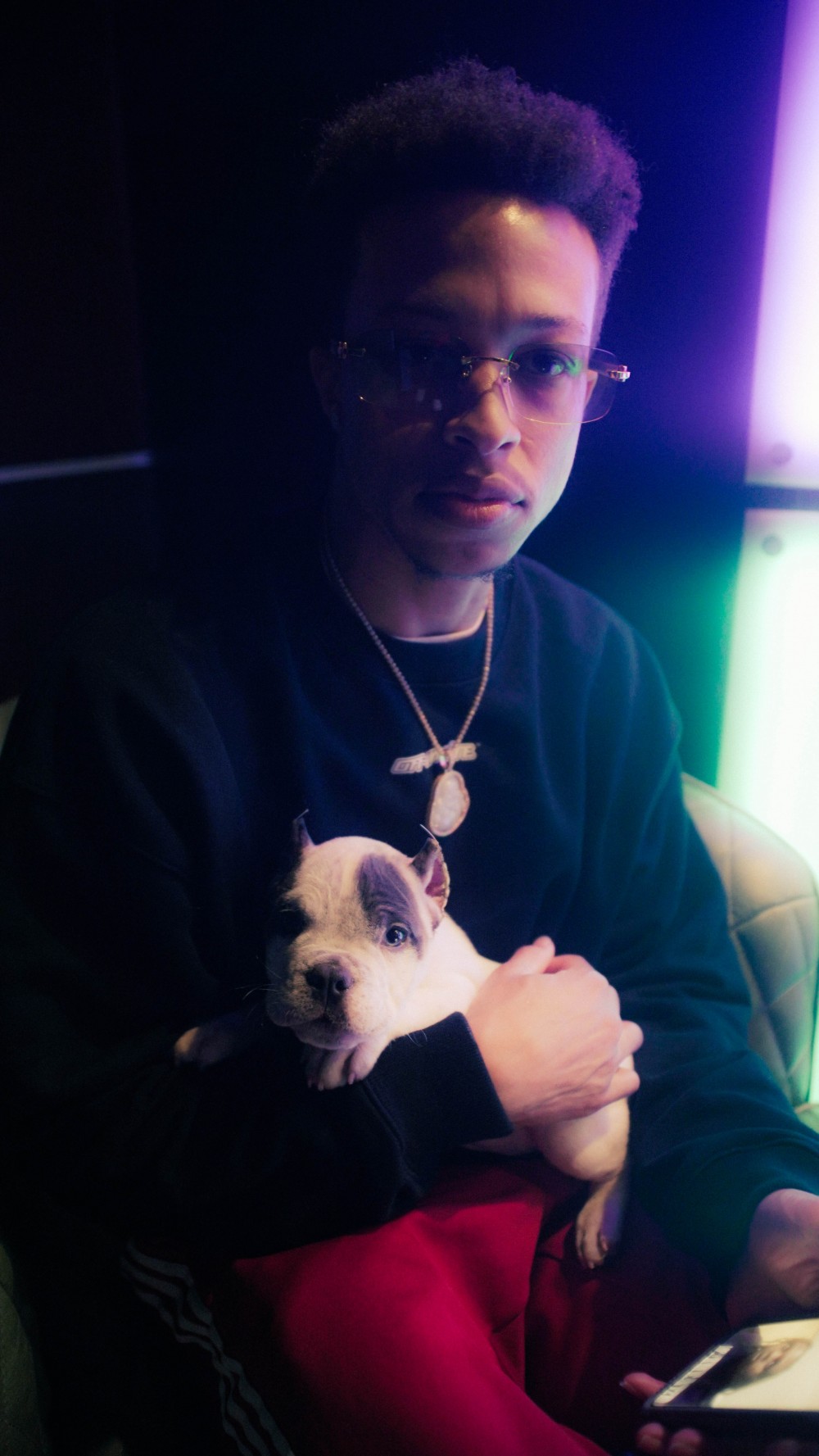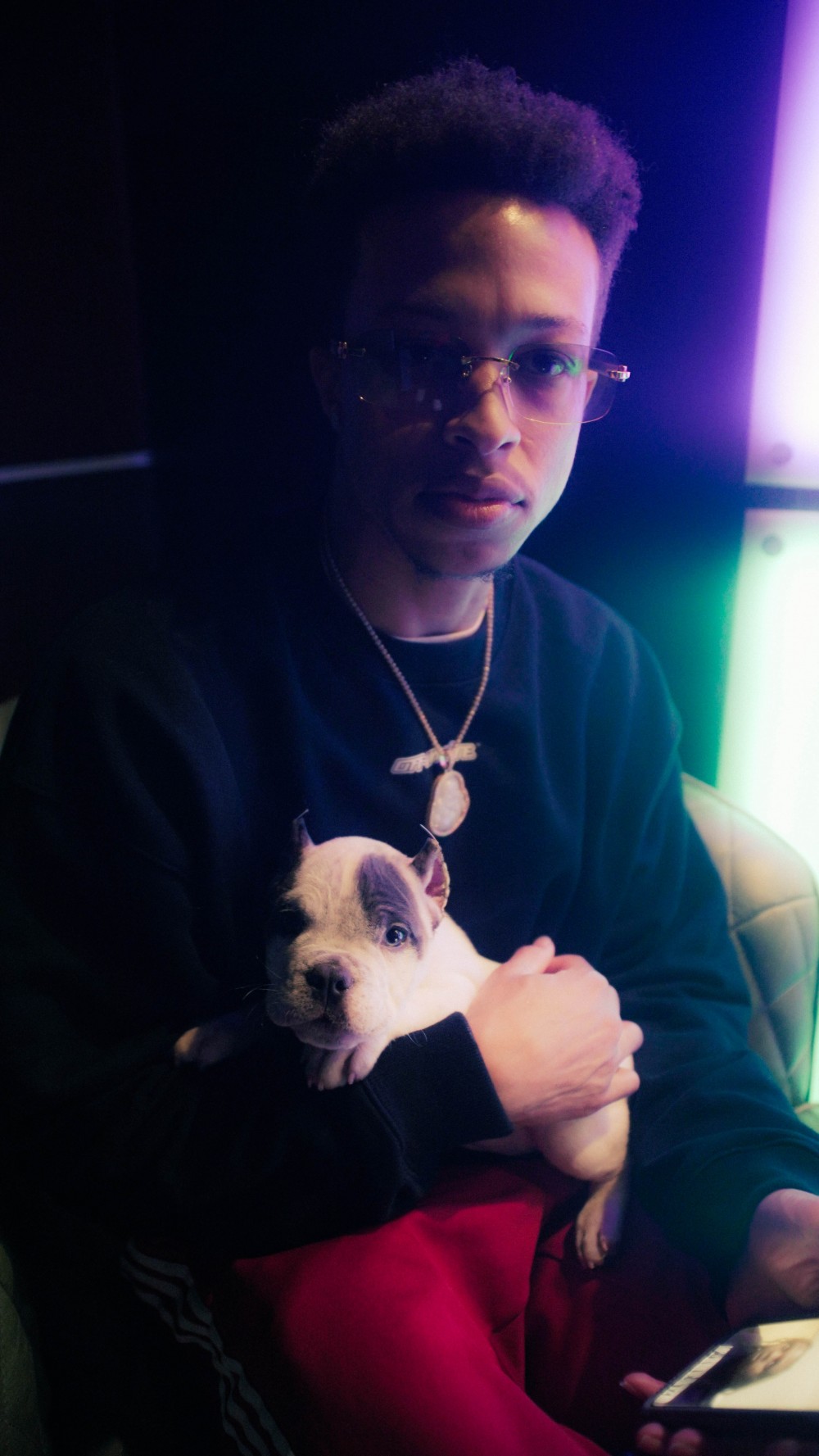
Photos courtesy of JoogSZN
Please support the beat junkies at Passion of the Weiss by subscribing to our Patreon.
No regional rap sound is forever definitive. But some define an era in a region’s history. If you trace the last three and a half decades of L.A. rap, you can point to the sound that soundtracked more local functions than any other, hit globally, or best encapsulated the ground-level feeling of cruising through large swaths of the freeway-fractured sprawl.
In the ‘80s, the stadium-wrecking 808 electro of Egyptian Lover and Uncle Jamm’s Army gave way to the battering ram gangsta rap of N.W.A. and Ice-T. Dre, Quik, & co. sampled from George Clinton and Zapp to fashion G-Funk, the synth-glinting bounce that blared from Impalas in Compton and stereos around the world for much of the ‘90s. (If you want to measure the spread of G-Funk, see southern rap records like E.S.G.’s Ocean of Funk.) Between 2005 and 2009, The Game rapped over something, I’m sure. It was a dark time. In the late aughts, the skeletal and percussive jerkin beats by JHawk presaged ratchet, the minimal Southern California-meets-the South hybrid that DJ Mustard synthesized before the mainstream abused it to the point of saturation.
The modern era of L.A. rap has largely been soundtracked by “traffic music,” alternately known as “nervous music.” There are elements of Mustard’s ratchet sound (e.g., the sparse drums and simple melodies), but it’s far darker, more sinister. Drums slam with the metallic bang of locker doors, while the synths smolder rather than shimmer. You can bounce to the beats or bump them in traffic, but there’s an undercurrent of menace and paranoia that mirrors the tension in the lyrics. If you want to hear iterations of traffic music, play Conradfrmdaaves’ “Vintage & Adventurous,” AZChike’s “Bleedem Joog,” or Drakeo the Ruler’s Thank You for Using GTL. JoogSzn produced them all. Alongside his compatriots in producer collective Hit Mob, the South L.A. native has been one of the chief architects of traffic music. For the past several years, they have created the definitive L.A. sound.
03 Greedo, Shoreline Mafia, ConradFrmDaAves, AzChike, AZSwaye, 1TakeJay—the list of preeminent L.A. rappers Joog for whom Joog has produced is long. To date, though, Joog’s crowning achievement remains Drakeo’s Thank You For Using GTL (2020), which he produced and helped Drakeo record over the phone while Drakeo languished in Men’s Central Jail. (Drakeo is now free, thankfully.) Earlier this month, I spoke with Joog to discuss his musical background, the history of the Hit Mob, his feelings on traffic music, the similarities between L.A. and Detroit rap, and the process of recording Thank You For Using GTL. For now, while Joog plots the next chapter of L.A. street rap, you can hear his latest work on the deluxe edition of Drakeo’s We Know the Truth. — Max Bell
Where did you grow up? Did the area impact your musical tastes?
JoogSZN: I was raised in the Crenshaw District, Leimert Park, and View Park. It didn’t affect me early because I had all kinds of other influences. I was listening to rock in middle school and chopped and screwed music. I was a big fan of OutKast. But I started to see the local music popping up on posters stapled to trees and stuff like that. I saw Nipsey Hussle posters. I’m like, “I know NH is Neighborhood, but who is this?” I started looking into it, and that’s when I heard Bullets Ain’t Got No Name. I went to school with PacMan and Tiny Boss Hogg, so it started to come together. I met Nip at the liquor store on Slauson. So when I started hearing the local rappers like him, Dom Kennedy, that influenced my music on the West Coast tip. I also went to school with Cream, so I knew about Overdoz early. I took that to Atlanta [when I went to Clark Atlanta University], and then the sounds just kind of melded together.
Did you grow up in a musical household?
JoogSZN: My grandpa played trumpet at La Louisanne. They had a band that he would play in on Sundays.
What was the first music that you discovered outside of your family?
JoogSZN: We had a computer before a lot of people had computers. I had the 56k internet and all that. We had this encyclopedia program, and I looked up music. I heard “The Message” by Grandmaster Flash. I was like, “This is hard.” But my family wasn’t really on that. They were mostly into jazz. In the house, I was listening to Quincy Jones and Miles Davis. My grandpa was playing jazz, so that’s what I was listening to. But when I discovered rap I was like, “Whatever that is, I want some more of that.” I was playing classical piano at the time, and I was like, “This is kind of boring. I don’t think there’s going to be a lot of recitals and opportunities for a classical pianist where I’m from.” I was listening to more rap — Ice Cube, Mack 10, and all the stuff on radio. My pops was like, “You can’t listen to that.” There was a ban on rap. I would listen to it in secret, and then [in middle school] I discovered LimeWire and BearShare. I was unstoppable at that point. I had an iPod Shuffle and LimeWire. It was a wrap.
When did you get into producing?
JoogSZN: I always knew I wanted to produce. I was listening to this Qunicy Jones album Q’s Jook Joint with my granny, and I was like, “Oh, Quincy Jones is the producer. I want to do that.” I played piano, and then my partner showed me what FL [Fruity Loops] was in middle school. It was difficult, so I didn’t push up on it. Then, in 2012, I got shot. My other partner actually showed me how to use the program while I was in recovery.
Which producers most influenced your early work?
JoogSZN: Cardo, DJ Quik, Sledgren, Pimp C, Juicy J, DJ Paul, and Organized Noize. It was until I met Ron that I started making more West Coast vibes. At first, I was more melodic. But my drums were not on point at all. Then T Swish introduced me to Ron-Ron, and it went up from there.
What equipment did you use to make your first beats?
JoogSZN: I was using Logic on the Mac, and I had a beat program on the iPad I got kind of savvy with. Then I turned my Mac into a Windows Computer so I could use FL because that’s what Ron and all them were using. In order to collab, I had to get that.
What do you use now?
JoogSZN: A Razer computer. I have two laptops. I still have my original MacBook. I use that for recording, and I make beats on the Razer. I have a Native Instruments keyboard. That’s pretty much my main setup. I have a lot of other equipment that’s collecting dust.
Do you have a home studio, or do you work pretty much anywhere?
JoogSZN: Me and Ron-Ron have a studio in a house. I be working out of there sometimes. There’s still a set-up at my mom’s house.
Who is currently in the Hit Mob?
JoogSZN: Me, Ron-Ron, AceTheFace, Menace, Quadwoofer, and LD Tha Monster. We have rappers as well. We also have Bruce24K.
How did you first link up with them?
JoogSZN: There were more people that were in it, but they branched off and started doing their own thing. It really all started when T Swish brought to Ron-Ron’s house. That was when I going by Joog the Chef. Then I changed it to Jooftr. We started collaborating. It was all love, on some brother shit. I was steady pulling up at the house. Ron introduced me to Ace. We were trading sauce and stuff. That’s when I was using the machine. They were looking at me weird because they were FL. It was like in the summer of 2015, we were like, “We might as well make a group out of it.” Then we made Hit Mob.
Can you walk me through how you guys work in the studio? How does a collaborative beat come together?
JoogSZN: Somebody will start a beat or melody, then someone else will like it and get on it. That’s pretty much it. They’ll add their sounds in. We’ve been keeping it to three producers tops, if that.
What does “traffic music” mean to you? How would you describe its sound to someone who had never heard it before?
JoogSZN: It’s been described to me as minimalist beats. It’s real simple beats, but my description is that it’s music that you listen to in traffic. You got subs in your car, that’s what it’s for. It’s for rattling them subs.
You produced “Me Too” for BandGang Lonnie Bands, which has more of a Detroit feel. For you, is there any overlap between the current L.A. and Detroit sounds?
JoogSZN: Absolutely. The sounds are cousins. My beats have a couple different low end instruments. That’s shared. They’re both around the same tempo. That’s pretty much what it comes down to. There’s slight variation in the highs, but the low end is damn near the same.
How do you think DJ Mustard has impacted the current sound of L.A. rap? Do you hear his influence on “traffic music?”
JoogSZN: Mustard stamped L.A. as far as the mainstream. He brought the jerkin sound to the mainstream. I would be lying if I said I didn’t [hear his influence].
Where do you get your drums? Do you sample? Do you buy packs?
JoogSZN: We got a pack that we all put in together, sounds that we’ve found or people gave us. At first, it was a Ron-Ron and a Joog kit and we were pulling from there, and then we put it together.
How do you feel about that crushing, locker-slamming, car-dropping drum that a lot of L.A. rappers rhyme over? You use it on “Bleedem Joog.” Is it eternal or played out?
JoogSZN: I feel like it’s going to come back at one point. Low the Great sold the damn beat kit. I don’t know why he sold the beat kit. So everybody everywhere started to trying to make beats like us because nobody could find those sounds. Ron-Ron actually sampled some of those sounds, and nobody knew where he got them. That was unique when we started going up. Once the kit was sold, it started getting played out.
Do you have a favorite synth for melodies?
JoogSZN: I’ve been stuck on the Arturia collection. I use Native Instruments, and I got a couple little secret slammers that I use. I can’t be telling everybody what they are.
How do you get most of your placements? Is it all via friends of friends?
JoogSZN: It’s either friends or TK and Picasso of R Baron management. As far as Stinc Team and Drakeo, we knew the Stinc Team when we were first starting out. Once we got connected with R Baron, we started getting linked up with Greedo.
When and how did you first meet Drakeo?
JoogSZN: We had a very small studio in Santa Monica. One random day I pulled up and he was there. That’s when I first met him. Then we were in Torrance and I saw him again. We started really chopping it up. That’s that when I started playing beats for him and he was like, “Send me that.” One of the beats I played for him was the “Ion Rap Beef.” He started rapping to it, and then Greedo popped in. And that’s how that came about.
What was your relationship like in the beginning? How long were you able to work before he got locked up?
JoogSZN: We did that song, and we might’ve done another song. That was it. It was literally like a week later that he went to jail… It wasn’t until they made him stay that we really started talking.
When did you discuss working together while he was inside?
JoogSZN: I gave him my number and I was like, “I got some beats just set to the side. When you get out, we can put these together.” We were plotting a whole tape, and then when they made him stay, we were hot. At that time, we were like, “Fuck it, we might as well record these now.”
Do you make specific beats with Drakeo in mind? What does an ideal Drakeo beat sound like? What elements go into it?
JoogSZN: Yeah, I do. It’s not really elements. It’s more of an attitude. My natural beats are Drakeo beats. If I don’t think about it and I just make a beat, that is a Drakeo beat. It’s a nonchalant, I don’t give a fuck attitude.
How much material did you have in the vault before Thank You for Using GTL?
JoogSZN: I think I made one of the beats while he was inside. All of the rest were on my hard drive in the secret Drakeo folder.
What equipment did you have to purchase to record Drakeo over the phone?
JoogSZN: This super secret special chord. I already had the interface at the house. I just had my mom send my interface through, because I was in Atlanta. I recorded him mostly in Atlanta and South Carolina.
Do you have plans to re-record the album?
JoogSZN: Yeah.
Audio quality aside, what was the most frustrating challenge while putting the project together?
JoogSZN: Just waiting.
Now that EOY lists are out, how do you feel about the reception of the project?
JoogSZN: I think it’s tight. We got an 8.5 in Pitchfork.
Do you feel like L.A. rappers are still overlooked nationally?
JoogSZN: Yes and no. They know mainstream artists like YG and Snoop. But I feel like nationally the West Coast gets put in a box. I feel like legendary artists should be way bigger.
What do you think is next for the sound of L.A. rap? Where are you hoping to take it?
JoogSZN: I want to take what we got going on mainstream, or at least more known. I feel like the artists I work with and the sound we make is newsworthy. Literally. NPR is fucking with it. That’s a huge international news outlet. They can take what we’ve got going on and translate it to more people.


